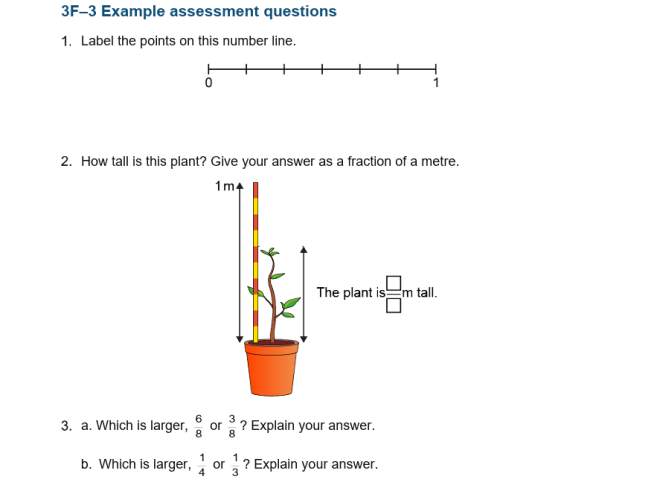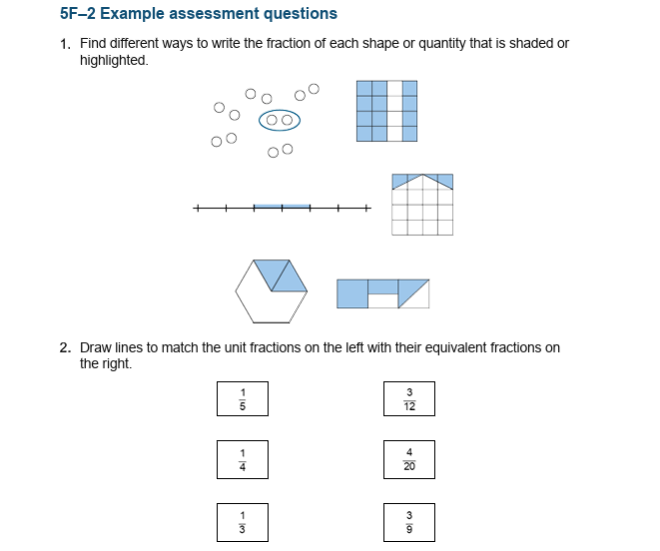Mixed-age mastery – how and why it works
One North Yorkshire primary school has made teaching for mastery work in four classes which span seven year groups

The school context
Kirkby Malzeard C of E Primary School in North Yorkshire has just 93 children on roll. Set in a sparsely populated rural location, the school has a higher percentage of pupils with SEND than average. It is part of the Kirkby Malzeard and St Nicholas CE Schools federation, and has a PAN (published admission number – the maximum number of pupils a school can admit in a given year) of 15.
The school began engaging with Yorkshire Ridings Maths Hub in 2019. To develop teacher knowledge and understanding around teaching for mastery and the Five Big Ideas, teachers took part in Developing, Embedding, and Sustaining Work Groups. To tackle some of the challenges of mixed-age whole-class teaching and develop practical strategies bespoke to their setting, they also took part in a mixed-aged Research and Innovation Work Group (RIWG) in 2023.
We spoke to Lizzie Oates, maths lead for the federation and class teacher at Kirkby Malzeard, about how teaching for mastery has been successfully implemented across the school.
The classroom challenge
Implementing teaching for mastery in mixed-age settings can feel problematic and challenging. Prior to starting their mastery journey, Kirkby Malzeard identified a range of issues which had previously prevented them embracing a teaching for mastery approach. These may be very familiar to those teaching in mixed-age settings!
Curriculum coherence
Maths is often seen as having ‘building blocks’ that must be taught in a certain order. Many commercial schemes reflect this, and the school initially felt that each year group’s curriculum content needed to be taught separately to ensure progression.
Teaching time and teacher workload
In 2019, the school adopted a popular off-the-shelf scheme that incorporated elements of mastery. Despite it offering ‘mixed-age’ options, separate maths lessons were still being taught for each year group. This negatively impacted maths teaching; each year group received only half of the teaching time needed, resulting in surface-level understanding.
Disadvantage gap
SEND pupils were not equipped with the foundational skills required to access learning. They often relied on inefficient strategies to ‘keep up’ and struggled with independent application. In smaller year groups (e.g., six children per year), pupils felt isolated when struggling, which sometimes caused spiralling maths anxiety, and intervention outside of lessons was required.
Assessment
Commercial summative assessment papers did not align with the school’s vision for a ‘go slower to go faster’ approach, failing to measure whether children had truly mastered maths or merely achieved an ‘expected’ standardised score.
Overcoming the challenges
Curriculum sequencing and class organisation
As part of their participation in the mixed-age RIWG, the school adopted the NCETM two-year rolling programme using the Curriculum Prioritisation Materials for mixed-age classes in KS2. The programme had been designed by the local Maths Hub, in conjunction with local mixed-age schools who truly understood the challenges.
In KS1, implementing split-teaching was challenging, but securing KS1 learning by the end of Year 2 was identified as crucial for success.
Before changing to the two-year rolling programme, writing a projected five-year forecast was important.
Mathematics five-year class plan
To support implementation, school leaders used the five-year pupil admission number forecast tool. This forecast enabled them to plan confidently, ensuring curriculum coverage and progression even if class structures changed. It also allowed leaders to anticipate and address any gaps in learning that might arise due to shifts in cohort size or staffing, helping to maintain a coherent maths journey for all pupils.
In Key Stage 1, ensuring that all children had secured key KS1 learning by the end of Year 2 was essential - the tool supported leaders to confidently move from a Year 1/2 to a R/Year 1 mix, which supported the schools preferred teaching styles of provision based learning with shorter, precise split year group maths inputs and small-group work.
Structuring the classes
Reception and KS1
The school implemented the NCETM two-year rolling programme using the Curriculum Prioritisation materials for main maths lessons, and the NCETM’s Mastering Number Programme from Reception to Year 2. Mastering Number formed the core of the maths curriculum for Reception and provided additional sessions for Years 1 and 2.
In Year 1, pupils received a daily main maths input separate from Mastering Number, focusing on accurate language, visual representations and connections, using the Year 1 Curriculum Prioritisation Materials. To accommodate this, and allow Year 1 pupils to access areas of provision, school leaders made the strategic decision to mix Reception and Year 1, who have separate maths inputs. Year 2 formed a single-age class to master KS1 objectives securely. This remains the school’s preferred class structure, should numbers allow.
KS2 whole-class teaching
The NCETM two-year rolling programme doubled the time spent on maths for each year group. Foundational fluency facts from KS1 were emphasised within lessons, and anchor units reinforced mathematical ideas.
In anchor units, the aim is to deepen understanding for the older year group whilst introducing a concept for the younger year group. The school focused on the Big Idea ‘Mathematical Thinking’; all pupils explored concepts at greater depth before moving on to more complex content, fostering high aspirations for all.
The school introduced two assessment strands: ongoing formative assessments using the DfE Ready-to-Progress criteria and end-of-year summative assessments (see examples below - click/tap to enlarge). Standardised scores were monitored alongside age-appropriate assessments, including past SATs papers in upper KS2.
The overall impact
Increased confidence
Staff have reported far greater confidence in designing and delivering maths lessons using a teaching for mastery approach, whilst pupils have demonstrated increased engagement, viewing maths as a process of exploration and reasoning rather than merely achieving correct answers.
Increased mathematical reasoning
The increased time within each lesson has allowed for an increase in mathematical thinking for all pupils throughout each learning point. Staff can now plan for discussions taking place throughout the lesson, which has resulted in pupils understanding and articulating their learning in a deeper way.
Clarity for SEND pupils
Whole-class mixed-age teaching in KS2 has allowed all pupils to progress together, by creating more time for those who were struggling previously to grasp concepts deeply. Consistent language choices have clarified mathematical processes, facilitating precise discussions and error correction for all.
Anchor units within the NCETM two-year rolling programme
These have provided opportunities for pupils to revisit and deepen understanding of key concepts. Higher prior-attaining pupils explore and articulate misconceptions and apply generalisations, while SEND pupils have strengthened foundational skills in a supportive environment.
Mastering Number
The Mastering Number Programme at KS1, delivered alongside the NCETM Curriculum Prioritisation Materials for main maths lessons, has positively impacted Year 2 pupils. They have consistently shown enhanced flexibility in strategies and reduced cognitive load.
Ofsted commented in the school’s recent inspection:
“The school’s curriculum is well designed and ambitious from early years onwards. Teachers know exactly what subject knowledge should be taught and when. Leaders support staff in considering the best approach to teaching subject matter. As a result, improvements have been made to the way the curriculum is delivered.”
Teachers’ top tips
- Prioritise securing KS1 foundations.
- Use consistent, precise language and representations to enhance understanding for all pupils, including SEND pupils.
- Invest in and value sustainable professional development models for all staff.
- Align assessment strategies with teaching for mastery principles to ensure consistency.
- Utilise high-quality resources to support lesson design and teaching for mastery approaches.
Ready to start your mastery journey in a mixed-age setting? Explore the rest of the mixed-age content on our website, and contact your local Maths Hub to discover the support available in your area.


